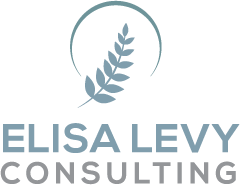Part III: Action Planning
There’s only one thing that is harder than making change: Resisting it. And yet, we fight it with all our might. We stay in the job that makes us miserable, we dodge the problems in our relationships, and we busy ourselves with minutia so that we don’t have to think about being stuck.
Change is freedom, but we resist it because we fear the unknown. Have you ever woken up in the night, worrying about something that is changing over which you have no control? We spend sleepless nights and frustrated days over these things, and yet we do have at least some control. The old adage about not controlling the direction of the wind, but being able to direct our sails is a wise observation.
The first column in this series differentiated between passive and active change. There may be some things over which we have no control, but it always behooves us to take some time to figure out how we are going to deal with it.
This process requires a little active contemplation and work, but the pay off can be profound. Entrepreneur and author Pat Croce advises that when you are stuck worrying about something, sit down and write out a plan for addressing it. Not only does this empower you, it may even excite you about the possibilities.
Give this process the time and energy it deserves, and begin with the following steps:
- Take stock of your current reality. In order to know where you are going, you need to understand where you are. Begin by assessing the current reality. On the top of the paper, write down the issue, and then two columns. The first is titled “concerns/fears.” The second is “solutions.” Common topics might include, the organization I work for is being sold, or my kid is going to college, or I have a new position in my company, etc. List your top five biggest concerns under the first column.
The practice of separating your fears and getting clarity on them alone is very useful. It helps you break it down and can almost immediately lessen the feeling of overwhelm you may be experiencing.
- Brainstorm solutions: Tackle one fear at a time. For each one, write down some ways you could address the issue. For example, if you the company you work for is being sold, one of your fears would be job security. Some solutions would be revising your resume, networking for other possible job options, or creating a list of accomplishments you could share with potential buyers. Come up with as many solutions as you could think of, even if some of them seem impossible. The idea is to open your mind to possibility and to remind yourself consciously and unconsciously, that you are never stuck.
- Turn your solutions into a to-do list. Choose solutions to at least some of the fears/concerns you have and put them into a time line. Deadlines are critical, as it is all too easy to ignore solutions and just stay in a place of fear. If you feel too overwhelmed to do them all, just start with one or two that seem easy enough. The feeling of hope you get from achieving even one, will help.
Whenever that feeling of fear comes back, turn back to that list, and remind yourself that you are doing whatever you can to manage the change. We must believe that if things can go well, they will, and that we always have the choice both to take action and to believe that the outcome will be okay.


